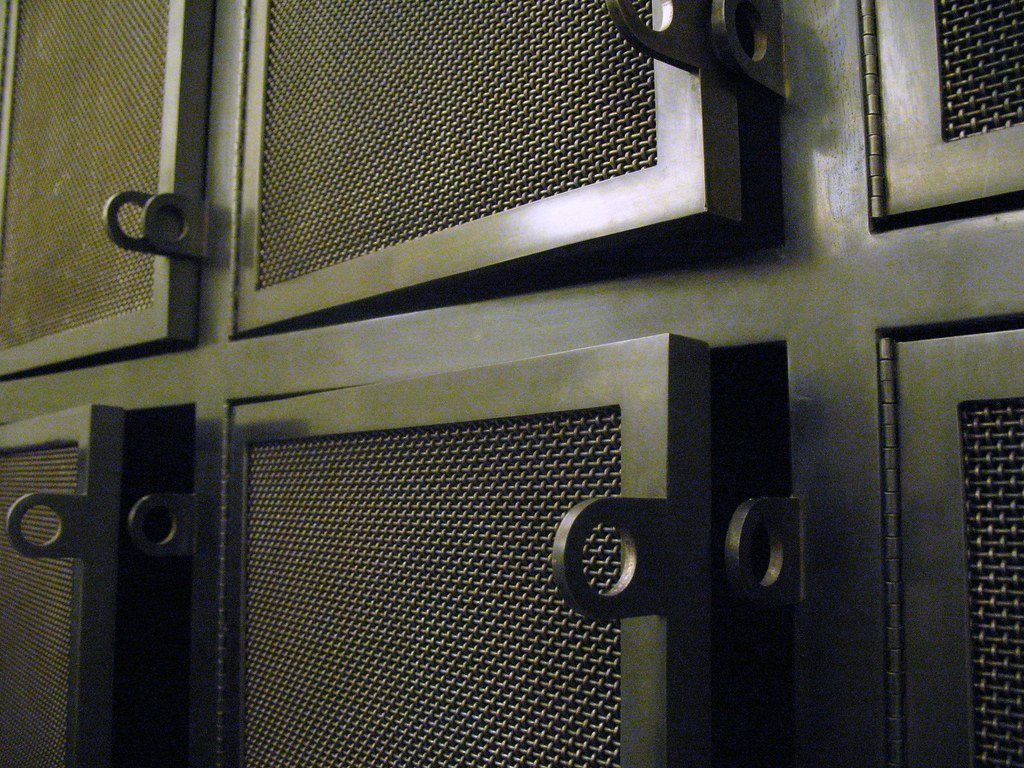Ever wondered how a seemingly ordinary tubular lock can securely keep your precious belongings tucked away? Prepare to delve into the mesmerizing world behind this unassuming keyhole mechanism as we embark on a step-by-step journey of discovery. Shedding light on the enigmatic inner workings of tubular locks, this guide will not only unfold the secrets lurking within but also equip you with a newfound appreciation for the ingenuity that lies beneath their unassuming façade. So, fasten your seatbelts, dear readers, as we embark on a captivating adventure through the fascinating realm of tubular locks. Locksmiths and curious minds alike, prepare to unravel the mysteries lurking behind each and every delicate turn of the key.
Table of Contents
- Introduction: Understanding the Mechanism Behind a Tubular Lock
- Examining the Components: Key Features and their Roles in Functioning
- Step-by-Step Guide: Unlocking a Tubular Lock Safely and Effectively
- Advanced Tips and Troubleshooting: Enhancing the Performance of Tubular Locks
- Recommendations for Maintenance: Keeping Your Tubular Lock in Optimal Condition
- Q&A
- Concluding Remarks

Introduction: Understanding the Mechanism Behind a Tubular Lock
Have you ever wondered how a tubular lock works? Well, prepare to have your curiosity satisfied as we delve into the fascinating mechanism behind this type of lock. Tubular locks are commonly found on safes, vending machines, and bicycle locks due to their high level of security. They are also known as pin tumbler locks, as they operate on a system of pins that need to be aligned in order to unlock the mechanism.
The main components of a tubular lock include the outer cylinder, which houses the lock mechanism, and the inner cylinder, where the key is inserted. The outer cylinder has a series of small holes arranged in a circular pattern. These holes hold the pins, which are tiny metal cylinders that vary in length. When the correct key is inserted into the inner cylinder, the grooves on the key align with the pins, pushing them to their correct heights.
- Alignment is key: In order for the lock to open, all the pins need to align perfectly along the shear line. This is where the inner and outer cylinders meet. If the pins are not aligned correctly, the lock will remain in a locked position.
- Turning the key: Once the pins are correctly aligned, you can turn the key. This action rotates the inner cylinder, which in turn rotates the outer cylinder, releasing the bolt and allowing the lock to open.
- Increased security: Tubular locks provide a higher level of security compared to standard pin tumbler locks. This is because they have multiple pins arranged in a circular pattern, making them more difficult to pick or manipulate.
Now that you have a basic understanding of how tubular locks work, you’ll appreciate the complexity and effectiveness of this lock mechanism. So the next time you encounter a tubular lock, you can marvel at the intricate system at play behind its seemingly simple design.

Examining the Components: Key Features and their Roles in Functioning
The success and effectiveness of any system or device hinges on its key components and how they perform their roles. Examining these components and understanding their functions is crucial in ensuring optimal performance and operation.
Here are some of the key features that contribute to the overall functioning of the system:
- Processor: The processor acts as the brain of the system, executing instructions and performing calculations.
- Memory: Memory, both volatile and non-volatile, stores data and instructions required for processing. It helps in faster access and retrieval of information.
- Input/Output Devices: These devices facilitate the communication between the system and the user. Input devices like keyboards and mice allow users to provide data, while output devices like monitors and printers display or produce the processed information.
- Operating System: The operating system manages and controls the overall functioning of the system, providing a user-friendly interface and ensuring proper allocation of resources.
- Storage Devices: Storage devices, such as hard drives or solid-state drives, store data for long-term use and retrieval.
- Peripherals: Peripherals include additional devices like scanners, webcams, or speakers that enhance the functionality of the system.
Each of these components plays a distinct role in contributing to the overall performance and usability of the system. Understanding their functions and how they interact with each other can help in troubleshooting issues, optimizing performance, and making informed decisions when it comes to upgrading or selecting a system.

Step-by-Step Guide: Unlocking a Tubular Lock Safely and Effectively
Unlocking a tubular lock can sometimes seem like a daunting task, but with the right tools and techniques, it can be done safely and effectively. Follow these step-by-step instructions to successfully unlock a tubular lock:
- Step 1: Obtain a tubular lock pick set. These sets typically come with various-sized picks that fit into the tubular lock’s pins. Make sure to select the correct pick size for your lock.
- Step 2: Insert the tubular lock pick into the lock, aligning it with the pins. Apply gentle pressure by turning the pick clockwise or counterclockwise, depending on the lock’s design.
- Step 3: Feel for the pins with the tip of the pick. Apply slight pressure to each pin, one at a time, until you feel it click into place. This indicates that the pin has been successfully lifted.
- Step 4: Repeat the process for each pin in the lock, lifting and releasing them until all are in the proper position.
- Step 5: Once all pins are lifted into place, turn the lock gently and smoothly with the pick still inserted. If all pins have been positioned correctly, the lock should unlock and open.
Remember, it’s important to use this guide responsibly and only unlock tubular locks that you have permission to access. Practice caution and respect the privacy of others. With practice, patience, and following these steps, you’ll be able to unlock tubular locks safely and effectively.
Advanced Tips and Troubleshooting: Enhancing the Performance of Tubular Locks
In the world of lock picking, tubular locks pose a unique challenge. Their cylindrical design and multiple pins require a different set of techniques to enhance their performance. Here are some advanced tips and troubleshooting strategies to improve the efficiency and security of your tubular locks:
- Utilize precision tools: Tubular lock picking requires finesse and precision. Invest in high-quality tools specifically designed for these locks. Opt for picks with adjustable tension and narrow tips, allowing for accurate manipulation of the internal pins.
- Master the rocking technique: One effective method to overcome the complexities of tubular locks is the rocking technique. Gently apply rotational pressure to the lock while simultaneously rocking the pick back and forth. This motion helps to align the pins, increasing the chances of successfully opening the lock.
- Experiment with tension: Tension plays a crucial role in tubular lock manipulation. Too much pressure can hinder the movement of the pins, while insufficient tension may fail to engage them. Practice finding the perfect balance to improve your success rate.
- Regular maintenance is key: Over time, dust, debris, and worn pins can affect the performance of tubular locks. To ensure optimal operation, periodically clean the lock with compressed air and lubricate the mechanism. Additionally, inspect the pins for signs of wear and replace any damaged components promptly.
Remember, mastering the art of picking tubular locks requires patience, practice, and continuous improvement. By implementing these advanced tips and troubleshooting strategies, you’ll be well on your way to enhancing the performance of your tubular locks.
Recommendations for Maintenance: Keeping Your Tubular Lock in Optimal Condition
Regular maintenance is essential for ensuring the longevity and smooth operation of your tubular lock. By following these simple recommendations, you can keep your lock in optimal condition:
- 1. Clean and lubricate: Periodically clean the lock mechanism with a soft, dry cloth to remove any dirt or debris. After cleaning, apply a small amount of graphite-based lubricant to the keyway and turn the key several times to distribute the lubricant evenly.
- 2. Avoid excessive force: While tubular locks are known for their durability, excessive force can cause internal components to wear down or break. Always apply gentle pressure when inserting or turning the key. If you encounter resistance, stop and inspect the lock for any potential issues.
- 3. Check for loose components: Regularly inspect the lock for any loose screws or other components. If you discover any, tighten them carefully using a screwdriver. This will help maintain the lock’s stability and prevent potential malfunctions.
- 4. Protect from moisture: Moisture can cause rust and damage to the lock mechanism. Ensure the lock is adequately protected from rain, humidity, or any other sources of water. If necessary, consider using a lock cover or applying a thin layer of rust-resistant coating to further shield the lock.
- 5. Seek professional assistance if needed: If you encounter any persistent issues or are unsure about performing maintenance tasks, it is best to consult a professional locksmith. They have the expertise to diagnose and resolve any lock-related problems effectively, ensuring your tubular lock remains in optimal condition.
By following these recommendations, you can maintain your tubular lock’s performance and reliability, providing you with peace of mind and enhanced security for years to come.
Q&A
How does a tubular lock work?
A tubular lock consists of a cylindrical keyway with pins and springs. When the correct key is inserted and turned, the pins align perfectly, allowing the plug to rotate and unlock the door.
What are the main components of a tubular lock?
The main components of a tubular lock include the outer casing, the plug, the key pins, the driver pins, and the springs. These components work together to create a secure locking mechanism.
How does the key operate a tubular lock?
The unique pattern of the key’s grooves corresponds to the positions of the pins in the lock mechanism. When the key is inserted, its grooves push the pins to their correct positions, enabling the plug to rotate and unlock.
What happens when the correct key is not used?
If an incorrect key is inserted, the grooves will not align with the pins, preventing the driver pins from reaching the shear line. As a result, the plug remains locked and the door cannot be opened.
Can tubular locks be picked or bypassed?
While tubular locks provide a higher level of security compared to traditional pin tumbler locks, they are not entirely pick-proof. Certain specialized tools, such as tubular lock picks or bypass techniques, can potentially compromise their security.
Are tubular locks commonly used in residential settings?
Tubular locks are commonly found in various settings, including both residential and commercial properties. They are often used in situations where a higher level of security is desired, such as on safes, bicycles, and vending machines.
What are the advantages of using a tubular lock?
Tubular locks offer several advantages, including a greater resistance to picking and increased tamper resistance due to their unique design. Additionally, they are compact and versatile, making them suitable for a wide range of applications.
Can a tubular lock be rekeyed?
Yes, tubular locks can typically be rekeyed by a professional locksmith. The process involves disassembling the lock, removing and replacing the key pins and springs, and then adjusting the lock to match a new key.
Concluding Remarks
As we conclude this step-by-step guide unraveling the enchanting mechanism of tubular locks, it becomes apparent that there is something exquisitely beautiful about the intricate dance of pins and springs within their cylindrical domains. We have embarked on a thrilling journey, delving deep into the rewarding realm of locksmith secrets, exploring the waltz of precision and complexity that keeps our valuables safely stowed away.
From the very beginning, we marveled at the sleek and unassuming exterior of a tubular lock, only to discover the hidden symphony behind its polished facade. Our exploration took us ever closer to the heart of this captivating creation as we carefully dismantled its core, revealing the delicate mechanisms tucked away within its metallic sanctuary.
Every step of our journey shed light on the artistry and craftsmanship that goes into the creation of these locks. We beheld the arrangement of pins, each holding a crucial role in the harmonious interplay that allows the lock to either embrace or deny access. Our fingers entwined with tapering springs, discovering their pivotal part in returning the lock to its original state of serenity.
The intricate dance of a tubular lock reminded us that true beauty often resides in the complexities that lie beneath the surface. With newfound knowledge, we can now appreciate the mastery of those who craft these elegant devices, their ability to turn steel and precision into a safeguard for our possessions.
As we bid farewell to this journey of unraveling secrets, let us carry the fascination and awe we have acquired into our daily lives. May it inspire us to appreciate the hidden intricacies in all that surrounds us, reminding us that even the simplest of things can hold captivating stories waiting to be unveiled.
Now, armed with a deeper understanding of the mesmerizing realm of tubular locks, we leave the doors open for further exploration. Who knows what secrets lie behind the locks and keys that shape our world?
As an affiliate, my content may feature links to products I personally use and recommend. By taking action, like subscribing or making a purchase, you’ll be supporting my work and fueling my taco cravings at the same time. Win-win, right?
Want to read more? Check out our Affiliate Disclosure page.
